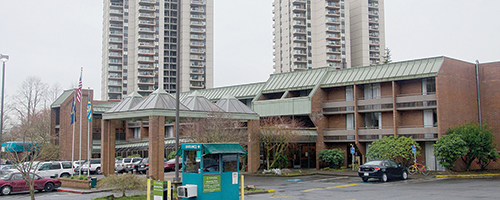Everyone knows about major environmental issues like climate change and ozone depletion. However, not everyone knows that there is a chemical connection between most of these environmental problems.
Class profile: ‘Chemistry of the Environment’
Everyone knows about major environmental issues like climate change and ozone depletion.
However, not everyone knows that there is a chemical connection between most of these environmental problems.
James Pankow, a professor of both chemistry and civil and environmental engineering, teaches a class that explains just how that interrelationship works: It’s called “Chemistry of the Environment.”
“The class tries to provide a chemical explanation to all of the major environmental issues,” Pankow said.
Climate change is an example, he said. It’s caused by greenhouse gases, but it’s not just the presence of the gas that is the issue.
“Greenhouse gases are naturally in the environment—that’s not a problem that they are there—but the problem is that the levels are increasing,” Pankow said. For this class, students look at what a greenhouse gas is, its composition, and how it causes the climate to warm.
“The class really explains the many issues and ongoing crises that will determine the future of generations,” student Ian Melzer said.
The class meets twice a week, and for each lecture Pankow provides students with a set of the notes he will use. Each set includes a variety of information in the form of text, graphics and pictures. Each year, Pankow spends five to six hours reformatting the notes and updating the information.
“The only solution is to distill down the text and a variety of other sources to a format that’s very compact and useful,” Pankow said. The environmental issues he discusses include fossil fuels, coal, air pollution, pesticides and alternative energy sources. All of these house smaller topics within them as well.
“My philosophy is that I don’t expect that anybody is going to become an expert on any of the things I talk about,” Pankow said. “My goal is that all of the students, if they are working and taking it seriously, will understand the basics of how every one of the major environmental problems work.” He wants students to be able to sit down with someone and explain the basic “hows” and “whys” of the issue.
In addition to weekly lectures, students are assigned homework sets. The assignments focus more on the chemistry and math sides of the material, and there are problems to be worked out and calculated.
Shannon Shabram, a student in the course, said that as a biology major she really enjoys the work. “The information presented is relevant to current global issues, and Pankow is incredibly helpful with homework sets.”
The class is primarily intended for engineering and chemistry students, but is available to anyone. The only requirement is that students must have at least a general chemistry background.
Currently there are only about 20 people enrolled in the class, but Pankow said he would really like to see registration grow to around 100 students.




